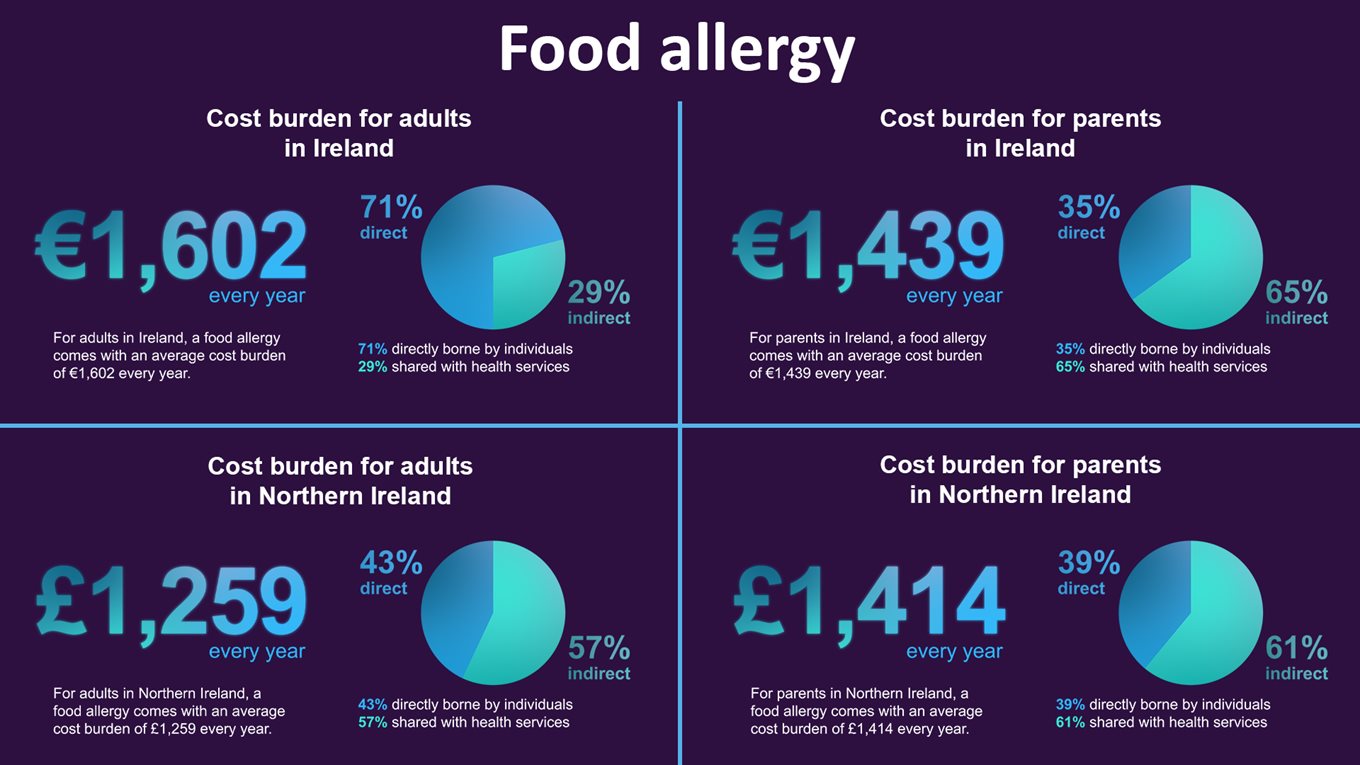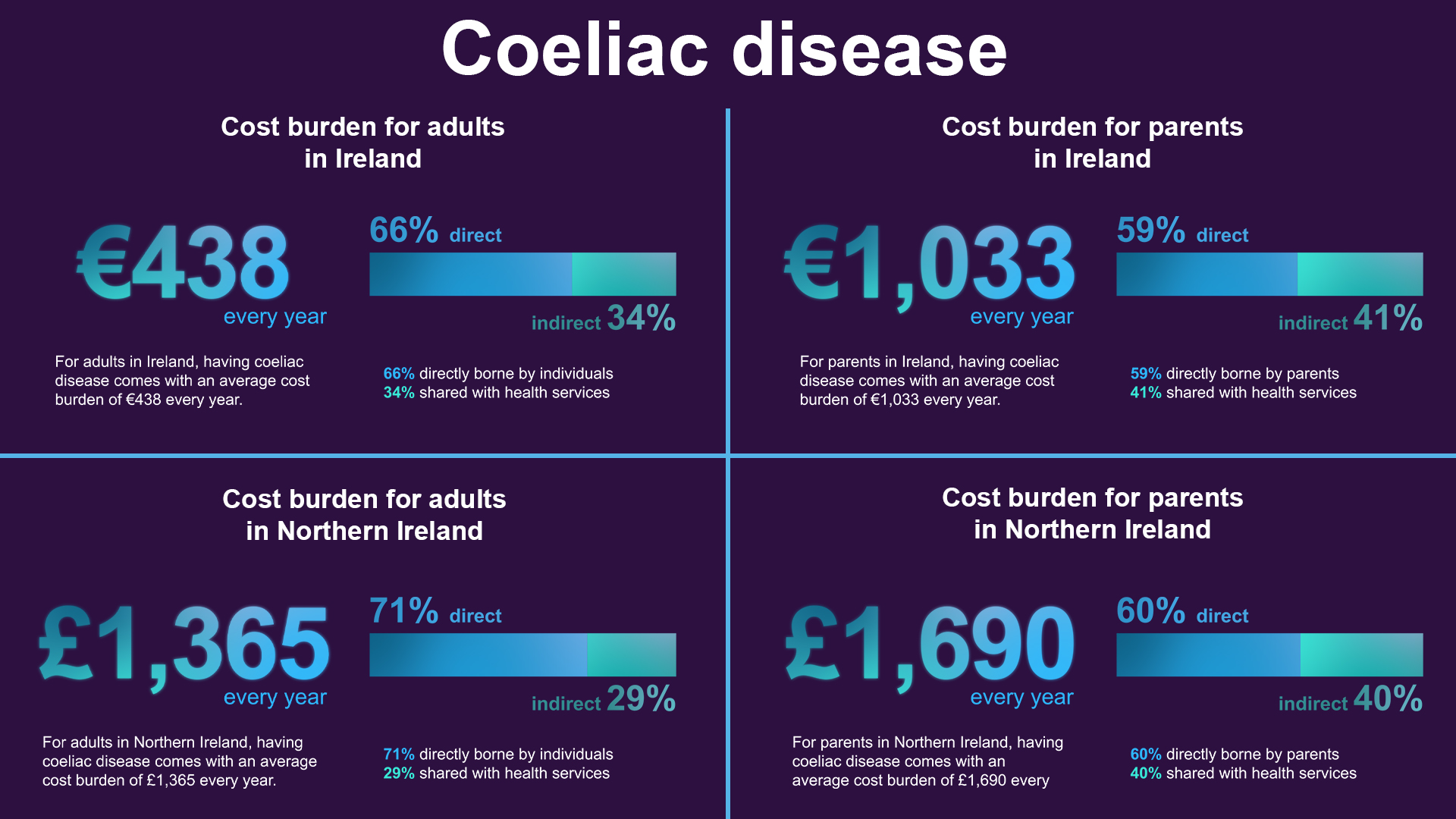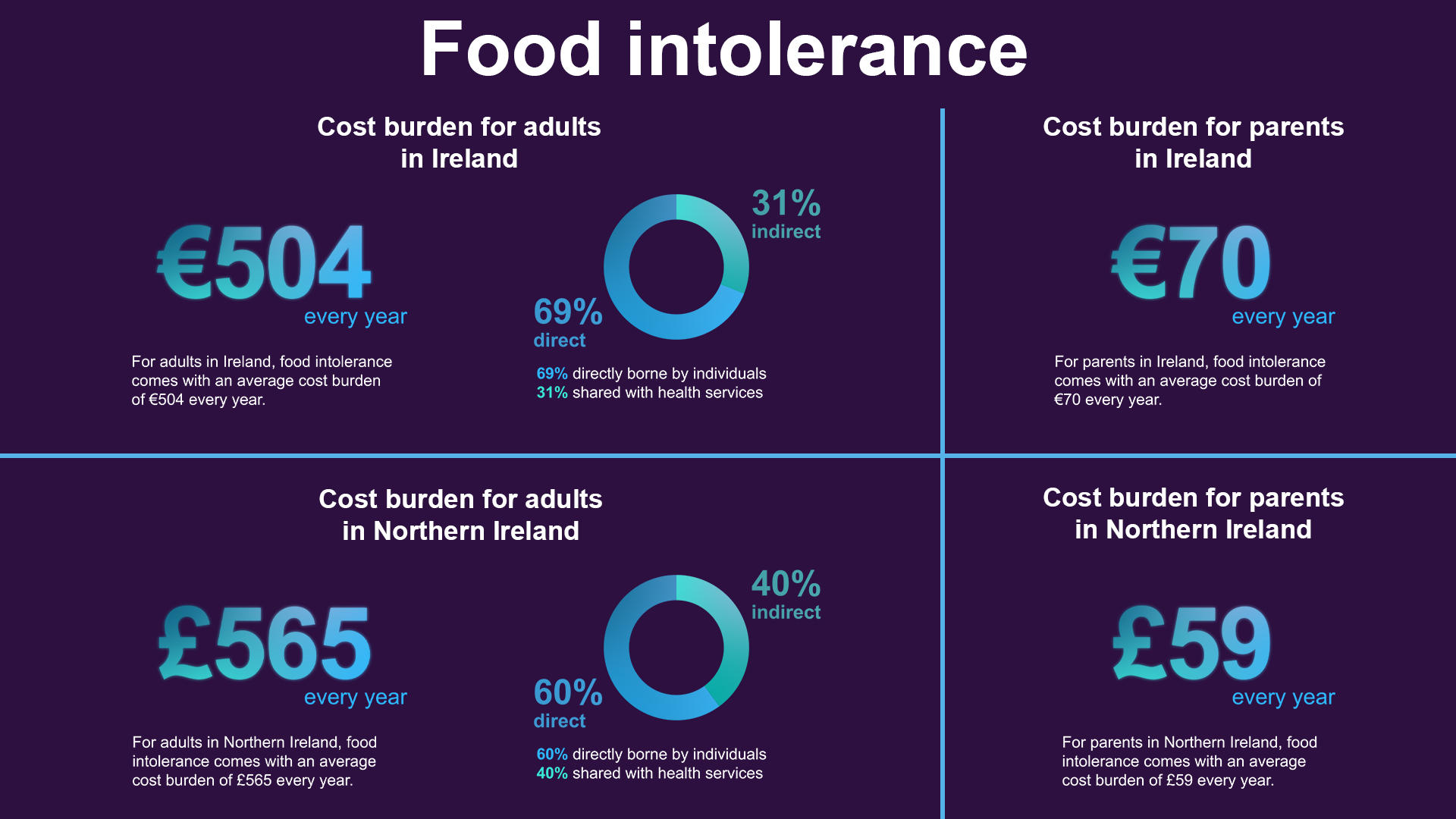The cost of living with a food allergy in NI

The cost of living with a food allergy comes at a price for individuals and families in Northern Ireland
Tuesday 28th June 2022: The average cost of living with a food allergy for individuals and families in Northern Ireland is estimated to be over £1,400 per year, new research has revealed.
New safefood funded research into the cost of living with a food allergy or coeliac disease in Northern Ireland has estimated that the average cost burden for a child with a food allergy is £1,414 every year, and £1,259 for an adult.
The research released today looks for the first time ever at the socio-economic cost of living with a food hypersensitivity (food allergy, food intolerance and coeliac disease) on the island of Ireland.
These costs are primarily medical costs including hospital visits and stays, as well as the cost of missed days from work, school, or college, and the cost of travel associated with medical appointments.
The research led by teams at Queens University Belfast and the Technological University Dublin also found that 43% of the adult costs (£542) were borne by the individual themselves, with the remaining 57% being shared with the health service (£717).
The out-of-pocket costs incurred by parents of food allergic children were slightly lower at 39% (£550), with 61% (£864) being shared with the health service.
For the first time in Northern Ireland, we now have reliable and locally relevant figures for the true cost of living with a food allergy, food intolerance or coeliac disease. “Collectively, these conditions affect at least one in ten of the population and symptoms can range from mild to life-threatening. What is clear from the research is that living with these conditions is a financial burden for individuals and their families.”
Introducing the findings, Dr Gary A Kearney, Interim Chief Executive, safefood, said; “For the first time in Northern Ireland, we now have reliable and locally relevant figures for the true cost of living with a food allergy, food intolerance or coeliac disease. “Collectively, these conditions affect at least one in ten of the population and symptoms can range from mild to life-threatening. What is clear from the research is that living with these conditions is a financial burden for individuals and their families.”
For those with coeliac disease, the associated extra costs were £1,365 a year for an adult, rising to £1,690 for a parent of a coeliac child. These costs were primarily due to medical visits but also health insurance and missed days from work, school or college.

For adults who were coeliac, 71% of the costs (£965) were incurred by the individual, with 29% (£400) shared with the health service. For parents of coeliac children, 60% (£1,011) were out-of-pocket costs with 40% (£679) shared with the health service.
Dr James McIntosh from safefood said; “This research highlights for the first time both the financial and social costs of living with a food hypersensitivity today. Healthcare-related expenses were found to be the main driver of costs, although total food costs and the loss of time/days were also found to be significant for many of the groups we examined. “As well as raising awareness about the issue, the benefit of the research is that it can help inform decisions when developing future supports and help. We aim to share the research with policy makers and the relevant support organisations who assist those living with a food allergy, food intolerance or coeliac disease.”
The research also looked at the non-monetary or ‘intangible’ costs involved to determine how quality of life can be affected by a food hypersensitivity. The people we surveyed reported a lower health status or quality of life. They had significantly higher levels of pain and discomfort, while anxiety and depression were common among adults and adolescents.”
Associated researcher Dr Charlene McShane from the Centre for Public Health, Queen’s University Belfast added, “The research also looked at the non-monetary or ‘intangible’ costs involved to determine how quality of life can be affected by a food hypersensitivity. The people we surveyed reported a lower health status or quality of life. They had significantly higher levels of pain and discomfort, while anxiety and depression were common among adults and adolescents.”

“Understandably, the food environment in general continues to present challenges for those with food hypersensitivity and their families, and those with food allergy and coeliac disease highlighted the importance of increasing public and industry awareness of food hypersensitivity,” said Dr McShane.
A report of the research “The Socio-Economic cost of food hypersensitivity on the island of Ireland” is available to download along with graphics illustrating the costs identified by the research.
Ends
For more information or to request an interview, please contact:
Russell Lever
ASG & Partners
Mob: 077 8828 8901
Email: [email protected]
Dermot Moriarty/Maeve Wrixon, safefood
Tel: +353 (0)86 381 1034 (Dermot) / +353 (0)87 334 1586 (Maeve)
[email protected]
Editor’s Notes:
The research was commissioned by safefood and carried out by Queens University Belfast and Technological University Dublin. A total of 1,300 surveys were completed online between November 2019 and October 2020 by Northern Ireland adults or parents of children with a medically diagnosed food allergy, medically diagnosed coeliac disease or a suspected food intolerance/food allergy.




